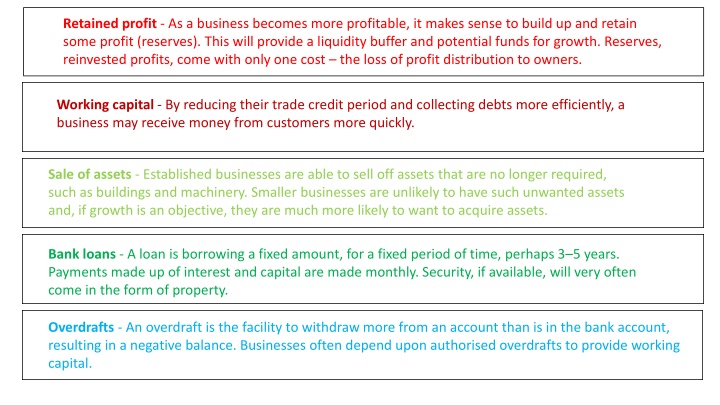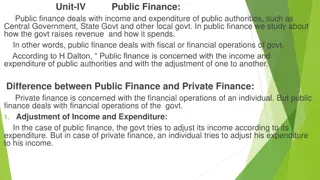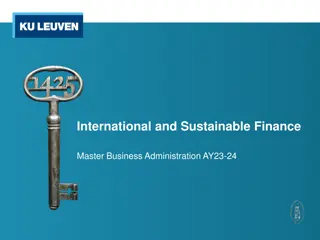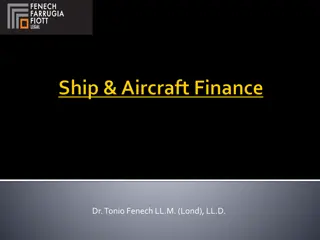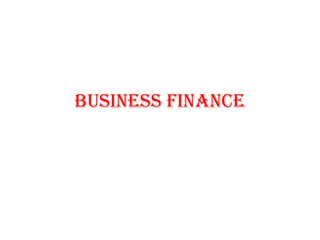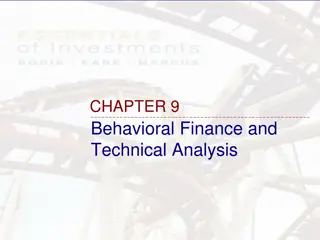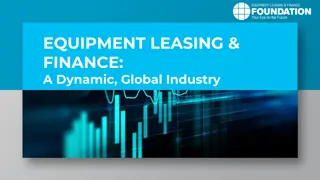Managing Business Finance for Growth
Businesses can utilize various sources such as retained profits, working capital management, bank loans, and leasing to support growth and financial stability. Understanding these finance options is crucial for sustainable development and expansion of businesses.
Download Presentation

Please find below an Image/Link to download the presentation.
The content on the website is provided AS IS for your information and personal use only. It may not be sold, licensed, or shared on other websites without obtaining consent from the author.If you encounter any issues during the download, it is possible that the publisher has removed the file from their server.
You are allowed to download the files provided on this website for personal or commercial use, subject to the condition that they are used lawfully. All files are the property of their respective owners.
The content on the website is provided AS IS for your information and personal use only. It may not be sold, licensed, or shared on other websites without obtaining consent from the author.
E N D
Presentation Transcript
Retained profit - As a business becomes more profitable, it makes sense to build up and retain some profit (reserves). This will provide a liquidity buffer and potential funds for growth. Reserves, reinvested profits, come with only one cost the loss of profit distribution to owners. Working capital - By reducing their trade credit period and collecting debts more efficiently, a business may receive money from customers more quickly. Sale of assets - Established businesses are able to sell off assets that are no longer required, such as buildings and machinery. Smaller businesses are unlikely to have such unwanted assets and, if growth is an objective, they are much more likely to want to acquire assets. Bank loans - A loan is borrowing a fixed amount, for a fixed period of time, perhaps 3 5 years. Payments made up of interest and capital are made monthly. Security, if available, will very often come in the form of property. Overdrafts - An overdraft is the facility to withdraw more from an account than is in the bank account, resulting in a negative balance. Businesses often depend upon authorised overdrafts to provide working capital.
Overdraft - An overdraft is designed to cover this funding deficit and provide working capital. Unfortunately, overdrafts can be withdrawn by a bank with just 30 days notice. This means a long-term dependency on an overdraft has dangers. Trade credit - Businesses buy items such as fuel and raw material and pay for them at a later date possibly 30 90 days later. Many suppliers today, however, offer discounts for early payment so delaying payment may result in higher costs in the long run. Factoring - Banks and other financial organisations offer factoring services which pay a proportion of the value of an invoice (80 85%) when the invoice is issued. The balance, minus a fee, is paid to the business when the invoice is paid. Factoring - Factoring services are only offered to businesses with a good trading record and reliable customers. It is, however, an effective alternative to an overdraft, as the cost is generally lower. Leasing and hire purchase - are methods of gaining the use of capital goods, whilst paying a monthly fee. With a business lease the company gains use of a productive asset, without ever owning it.
Leasing and higher purchase - Any existing capital can then be used for other purposes within the business. The major disadvantages of these forms of finance is that they cost more than outright purchase and the business is obliged to pay the lease or complete the hire purchase contract. Commercial mortgage - the property is used as security against the loan and the loan can be as much as 60 or 70% of the value of the property. Because security is being offered to the lender, the interest rates will be lower than an unsecured loan. Sale and leaseback - involves the business selling assets (buildings, machinery) to a finance company and then leasing the asset back. This method of raising finance means that the capital that is produced can be reinvested into growing the business. Share capital - is a form of permanent capital; this means it does not have to be repaid. Owners of shares have a say in how the business is run, but the amount of influence they have depends upon the percentage shareholding they own. Venture capitalists - are professional investors who can invest large amounts of capital into small and medium-sized businesses. . They will take seats on the board and appoint managers and advisors to help generate success and growth.
Internal sources of finance External sources of finance
